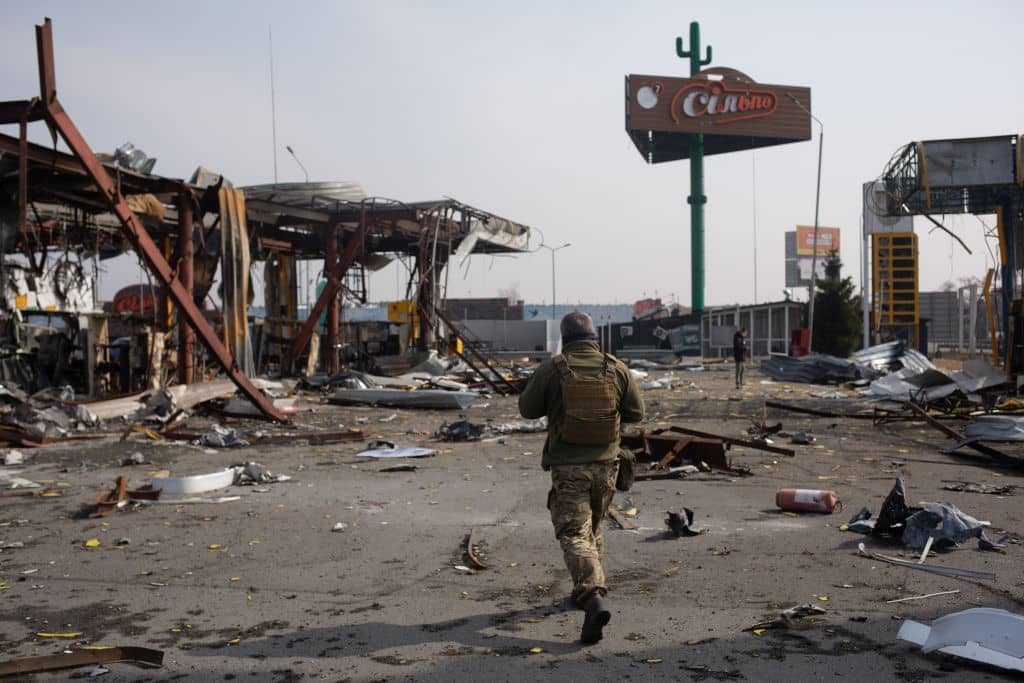We are seven weeks into the war and the level of destruction in Ukraine is mounting. Every single day we learn more about Russia’s scorched earth tactics and about the atrocities its forces have committed in the areas they once occupied.
But with another Russian surge in Ukraine’s east looming, one trend is not sufficiently understood in the West. Over the past weeks, Russian air and missile strikes have deliberately targeted and destroyed key components of Ukraine’s critical civilian infrastructure, especially in the energy sector, in a bid to make the country collapse.
In late March the Pentagon estimated that Russia had fired over 1,200 precision guided missiles into Ukraine. The cost of direct damage to Ukraine’s infrastructure in the month since Russia invaded the country has reached $63 billion, according to the Kyiv School of Economics. Ninety-two factories (including food warehouses), 378 educational institutions, 138 healthcare institutions and 12 airports have been damaged, destroyed or seized.
The sad reality is that Ukraine lacks the ability to protect its critical infrastructure against air and missile attacks
But it may well be the energy sector where Russian missiles will do the most long-term harm.

Get Britain's best politics newsletters
Register to get The Spectator's insight and opinion straight to your inbox. You can then read two free articles each week.
Already a subscriber? Log in






Comments
Join the debate for just £1 a month
Be part of the conversation with other Spectator readers by getting your first three months for £3.
UNLOCK ACCESS Just £1 a monthAlready a subscriber? Log in